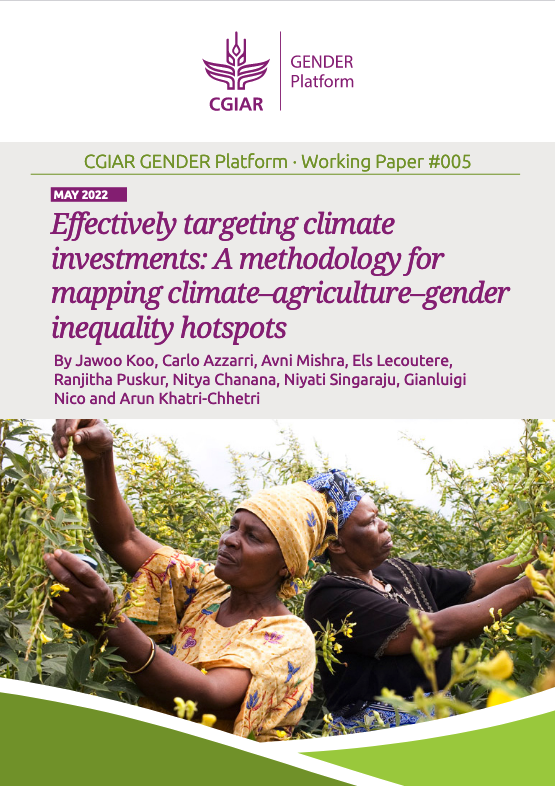Climate change is influencing the transformation of agriculture and food systems across the globe in unprecedented ways. A large number of smallholder farmers in low- and middle-income countries (LMICs) who depend on these systems for their food and nutrition security, and incomes are experiencing increasing vulnerability. Women are at a particular disadvantage, given their lower adaptive capacity due to unequal access to productive resources and services, driven by deeply entrenched social and gender norms and other structural barriers. However, addressing these gender gaps can enable women to use their knowledge and skill to contribute to climate-resilient agriculture. This paper proposes a methodology to map climate–agriculture–gender inequality hotspots at national and subnational levels where climate hazards, women’s exposure to climate hazards affecting food systems, and gender inequalities converge to impact women’s vulnerability to climate change. These hotspots are geographical areas where extreme climate hazards intersect with large concentrations of women participating in food systems and in the agricultural labor force, and with high levels of gender inequalities—and as such, result in high risk and exposure, low adaptive capacities, and higher vulnerability of women to adverse effects of climate change. The hotspots are identified using a set of indicators based on available secondary data comparable across the countries, conforming to the framework developed for this assessment, and using the Principal Component Analysis methodology. The paper also presents the results of the analysis emerging from the application of this methodology. This includes a global ranking of 87 LMICs in Latin America, Asia and Africa by a climate–agriculture–gender inequality hotspot index using representative national-level data. Identification of subnational climate–agriculture–gender inequality hotspot areas using representative subnational level data in four selected countries is also discussed. Hotspot mapping can support organizations aiming to effectively target investments to address climate-change mitigation and adaptation so that women are not left out, and the climate change–induced food-systems transformations help advance gender equality.

